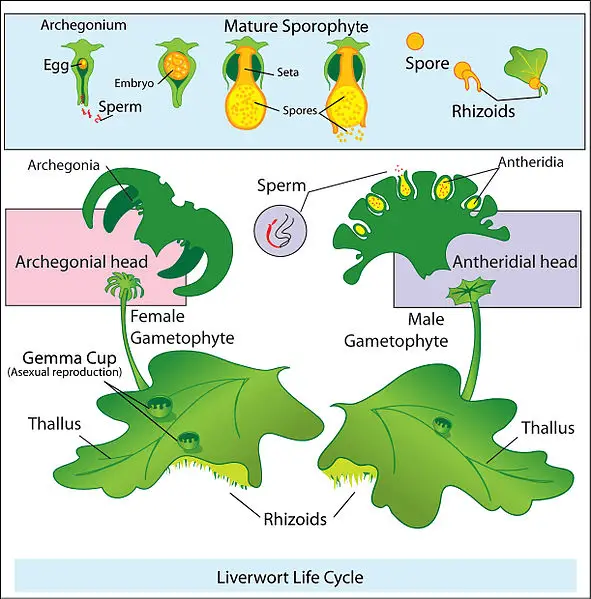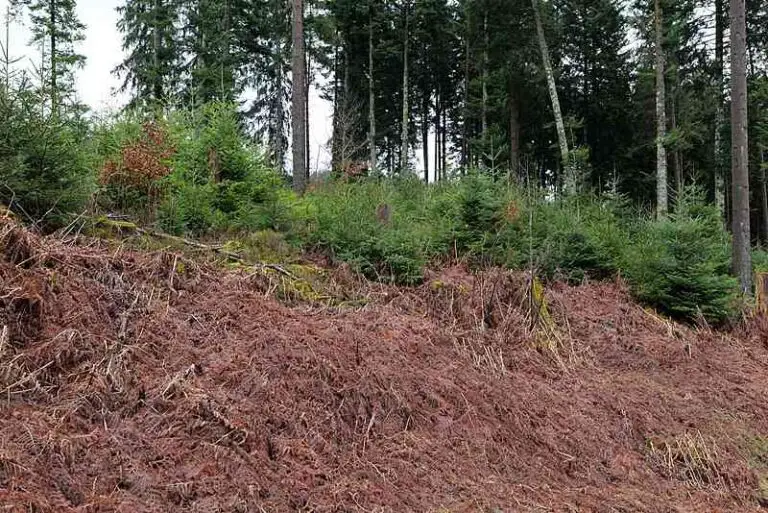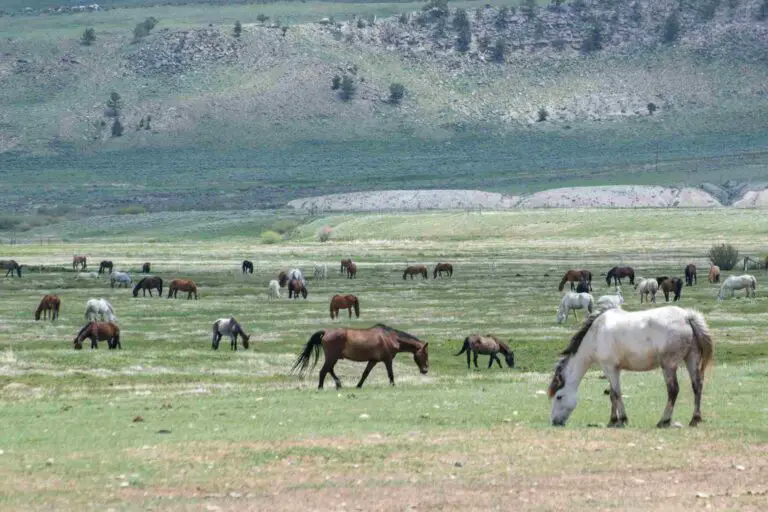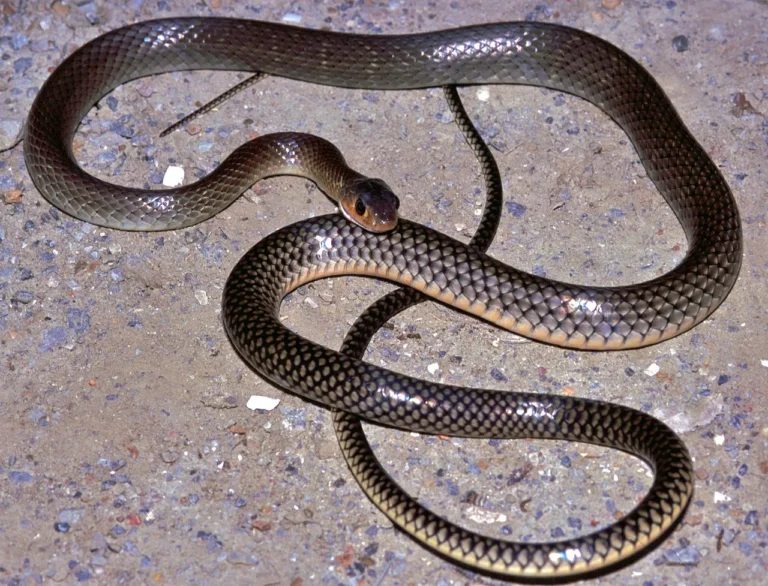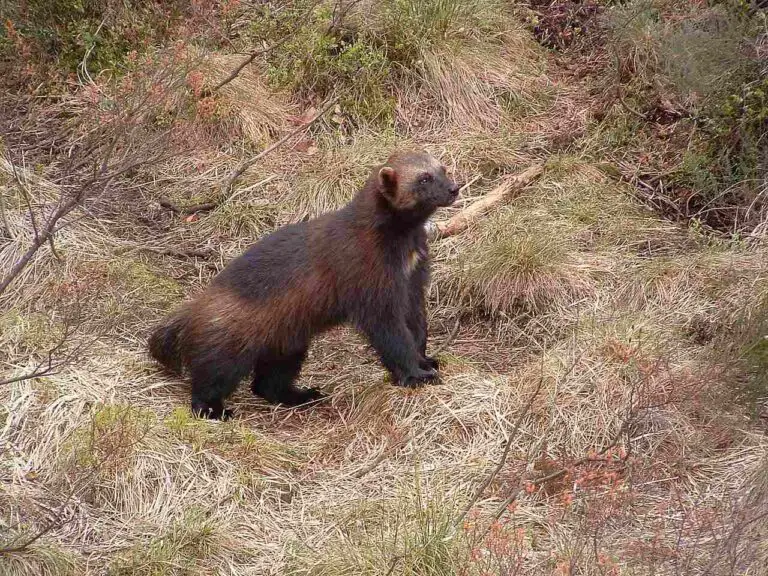Vascular Vs Non-Vascular Plants Comparison Discussed
Vascular vs non-vascular plants comparison and contrast can be done using criteria like; physical characteristics, biological complexity, lifecycle, classification/types, and examples.
This article discusses vascular vs non-vascular plants comparison, as follows;
1). Physiological/Physical Characteristics (as a Criterion for Vascular Vs Non-Vascular Plants Comparison)
One of the biggest differences between vascular and non-vascular plants is in their respective physical characteristics.
Vascular plants are also called 'tubular' or 'tube' plants; which is taxonomically translated as; tracheophyta [4], because their physiology is well-equipped with conducting tissues that help transmit water and nutrients through the organism; and optimize its role in the food chain as well as its interaction with biotic and abiotic factors in its ecosystem.
The tubular physiology of vascular plants also increases their efficiency as contributors to biogeochemical cycles and processes that occur on the Earth's surface; like oxygen cycle, carbon cycle, carbon sequestration and photosynthetic solar conversion.
On the other hand, non vascular plants sprout from spores, and do not have a robust, tubular physiology. From this it can be deduced that they are less biologically-equipped to be effective as carbon sinks and sources of bioenergy.
It must however be noted that the physiology of both vascular and non-vascular plants vary with individuals and species, and are dictated by conditions of a given environmental system, and adaptive tendencies of the plant.
Evidence of these case-specific variations can be observed in the ability of some plants to thrive better in freshwater-aquatic ecosystems, marine biomes, or deserts.
The physical characteristics of vascular plants are;
1. Possession of fluid-conducting vascular tissues like xylem and phloem
2. Dermal and meristamatic tissues for mechanical support and resilience are well-developed
3. Typical plant components like leaves, stems and roots are present
4. Dorsal profile tends to be robust
5. Growth range of species, varies exponentially
The physical characteristics of non-vascular plants are;
1. Lack of fluid-conducting vascular tissues
2. Mechanical-supportive tissues are not advanced in development
3. Members lack true leaves, stems and roots, although they may possess organelles/components that resemble these
4. Dorsal profile tends to be flattened or tapering
5. Growth range of members is relatively narrow
The above comparison and contrast between vascular and non-vascular plant physical characteristics, is summarized in the table below;
Comparison Criterion | Vascular Plants | Non-Vascular Plants |
Vascular tissues | Present | Absent |
Mechanical support | Well-developed | Poorly-developed |
True leaves, stems, roots | Present | Absent |
Dorsal profile | Robust | Flattened, tapering |
(Relative) Growth range | Broad | Narrow |

2). Biological Complexity
A look at their respective physiologies (as we have done in section 1 above) shows that vascular and non-vascular plants are each at different levels of biological and evolutional complexity.
It can be argued that vascular plants are more advanced in every essential aspect of their biological development; as this group possesses highly-adapted characteristics like true leaves, stem, root; vascular and meristematic tissues.
The non-vascular plants lack many of these attributes, and are apparently at the lower end of the evolutionary spectrum, relative to vascular plants.
Vascular plants are more complex, biologically, than non-vascular plants, and this reflects in their physical development, ecologic and geographic versatility, metabolic capabilities, reproductivity, as well as their diversity and species-richness as a group.
The most complex vascular plants are the angiosperms; which are capable of producing flowers, and performing pollinating-fertilization [2]. Hundreds of thousands of angiosperm species exist, among which their are notable, unique attributes which the species have acquired evolutionarily.
Higher complexity makes vascular plants more resilient to the environmental impacts of human activity, which explains why they are easily cultured for various purposes.
Vascular plants are also able to produce more biomass, and dominate vegetative terrestrial ecosystems like forests and grasslands, where they are effective as carbon sinks for environmental and climatic regulation.
In expression of their relative complexities; vascular and non-vascular plants are sometimes referred to as higher plants and lower plants respectively.
3). Lifecycle (as a Criterion for Vascular Vs Non-Vascular Plants Comparison)
Two main generations or stages constitute the lifecycle of plants, namely; the diploid sporophyte generation, and the haploid gametophyte generation [3].
Diploid stage (sporophyte) features the possession of two sets of chromosomes by the plant's cells, while haploid stage features one set of chromosomes in the cells of the plant.
The main difference between the lifecycle of vascular and non-vascular plants, respectively; is the dominance of gametophyte stage in non-vascular plants.
Having one set of chromosomes in their dominant stage/generation makes non-vascular plants unique, and also reduces the complexity of their lifecycle phase-transitions.
The stages of the lifecycle of vascular plants are sporophyte and gametophyte, which are same as the stages of non-vascular plant-lifecycle.
Some vascular plants are similar in their biological development to non-vascular plants, by reproducing with spores instead of seeds [5]. These are called seedless vascular plants.
The lifecycle of seedless vascular plants is different from the lifecycle of non-vascular plants through the dominance of sporophyte generation/stage; while the gametophyte stage is dominant for non-vascular plants.
Lifecycle trends and characteristics determine various other attributes of plants including their speciation, physiology and biological complexity.

4). Classification and Types
Vascular and non-vascular plants can be differentiated by the respective classifications and types.
Factors used to distinguish the various classes or types may also differ between vascular non-vascular categories.
The classification of vascular plants included three categories or types, which are;
1. Angiosperms
2. Gymnosperms
3. Pteridophytes
The factors used for differentiation of these classes are mainly physiological, including the ability or inability to produce flowers.
Angiosperms are flowering vascular plants and gymnosperms are non-flowering plants [1].
Pteridophytes are seedless vascular plants that reproduce using spores.
The non-vascular plants are generally referred to as bryophytes.
Classification of non-vascular plants distinguishes two main groups, classes or types, namely;
1. Bryophytes
2. Algae
Bryophytes are largely terrestrial, and consist of three sub-categories, which are;
(i). Bryophyta
(ii). Anthocerotophyta
(iii). Marchantiophyta
The three groups differ in adaptive physiology.
Bryophyta includes all species of mosses, Anthocerotophyta is made up of hornworts; while Marchantiophyta comprises of liverworts.
Algae are largely aquatic, although terrestrial species exist. There are several algae species, which may be broadly distinguished as green, red, and brown algae, among others.
It must be noted that the status of algae as non-vascular plants is highly disputable, and is in fact unrecognized in many schools of thought. However, this does not detract from the immense similarity between algae and the typical lower plants.
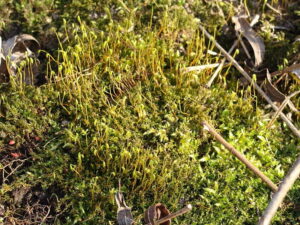
5). Examples (as a Criterion for Vascular Vs Non-Vascular Plants Comparison)
A list of the examples of vascular and non-vascular plants respectively, can help with distinguishing these two categories.
Examples of vascular plants are;
1. Ferns
2. Clubmosses
3. Flowering plants like hibiscus
4. Grasses
5. Trees
6. Shrubs
Examples of non-vascular plants are;
1. Mosses
2. Liverworts
3. Hornworts
Conclusion
Similarities and differences between vascular and non-vascular plants can be analyzed based on criteria like;
1. Physiological/Physical Characteristics
2. Biological Complexity
3. Lifecycle
4. Classification and Types
5. Examples
The table below summarizes vascular vs non-vascular plant comparison using the above-listed criteria;
Comparison Criterion | Vascular Plants | Non-Vascular Plants |
Physical Characteristics | Vascular tissues, true leaves, stems, roots | Absence od vascular tissues and true organelles |
(Relative) Biological Complexity | High | Low |
Dominant Lifecycle Stage | Sporophyte | Gametophyte |
Classification and Types | Angiosperms, Gymnosperms, Pteridophytes | Bryophyta, Anthocerotophyta, Marchantiophyta |
Examples | Ferns, clubmosses, flowering plants, grasses, trees, shrubs | Mosses, liverworts, hornworts |
References
1). Condamine, F. L.; Silvestro, D.; Koppelhus, E. B.; Antonelli, A. (2020). "The rise of angiosperms pushed conifers to decline during global cooling." Proc Natl Acad Sci U S A. 2020 Nov 17;117(46):28867-28875. Available at: https://doi.org/10.1073/pnas.2005571117. (Accessed 20 May 2023).
2). Leslie, A. B.; Simpson, C.; Mander, L. (2021). "Reproductive innovations and pulsed rise in plant complexity." Science. 2021 Sep 17;373(6561):1368-1372. Available at: https://doi.org/10.1126/science.abi6984. (Accessed 20 May 2023).
3). Pandey, S.; Moradi, A. B.; Dovzhenko, O.; Touraev, A.; Palme, K.; Welsch, R. (2022). "Molecular Control of Sporophyte-Gametophyte Ontogeny and Transition in Plants." Front Plant Sci. 2022 Jan 13;12:789789. Available at: https://doi.org/10.3389/fpls.2021.789789. (Accessed 20 May 2023).
4). Raven, J. A. (2003). "Long-distance transport in non-vascular plants." Plant Cell and Environment 26(1):73–85. Available at: https://doi.org/10.1046/j.1365-3040.2003.00920.x. (Accessed 20 May 2023).
5). Yatskieych, G. (2003). "Pteridophytes (Ferns)." eLS. Available at: https://doi.org/10.1038/npg.els.0003679. (Accessed 20 May 2023).
